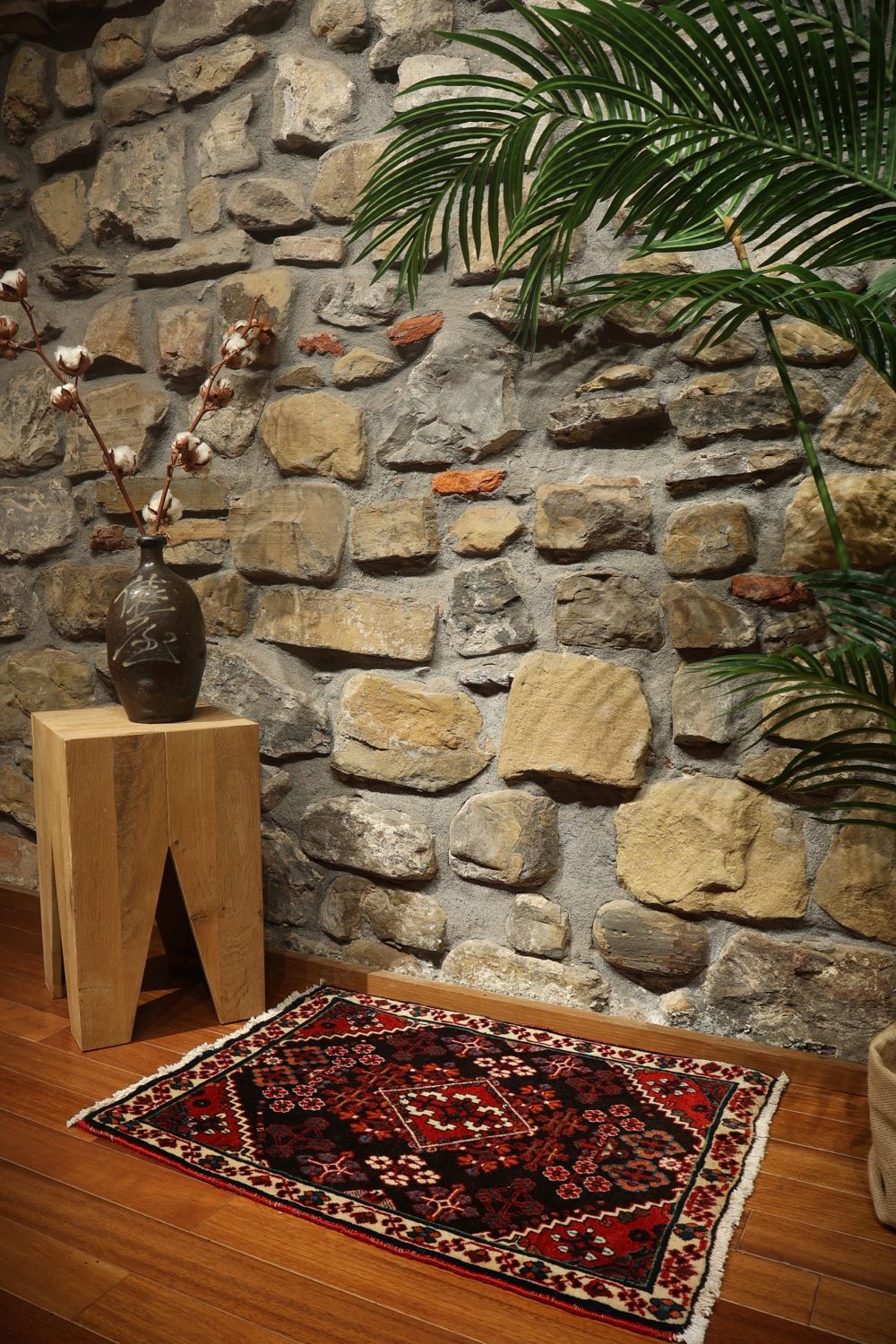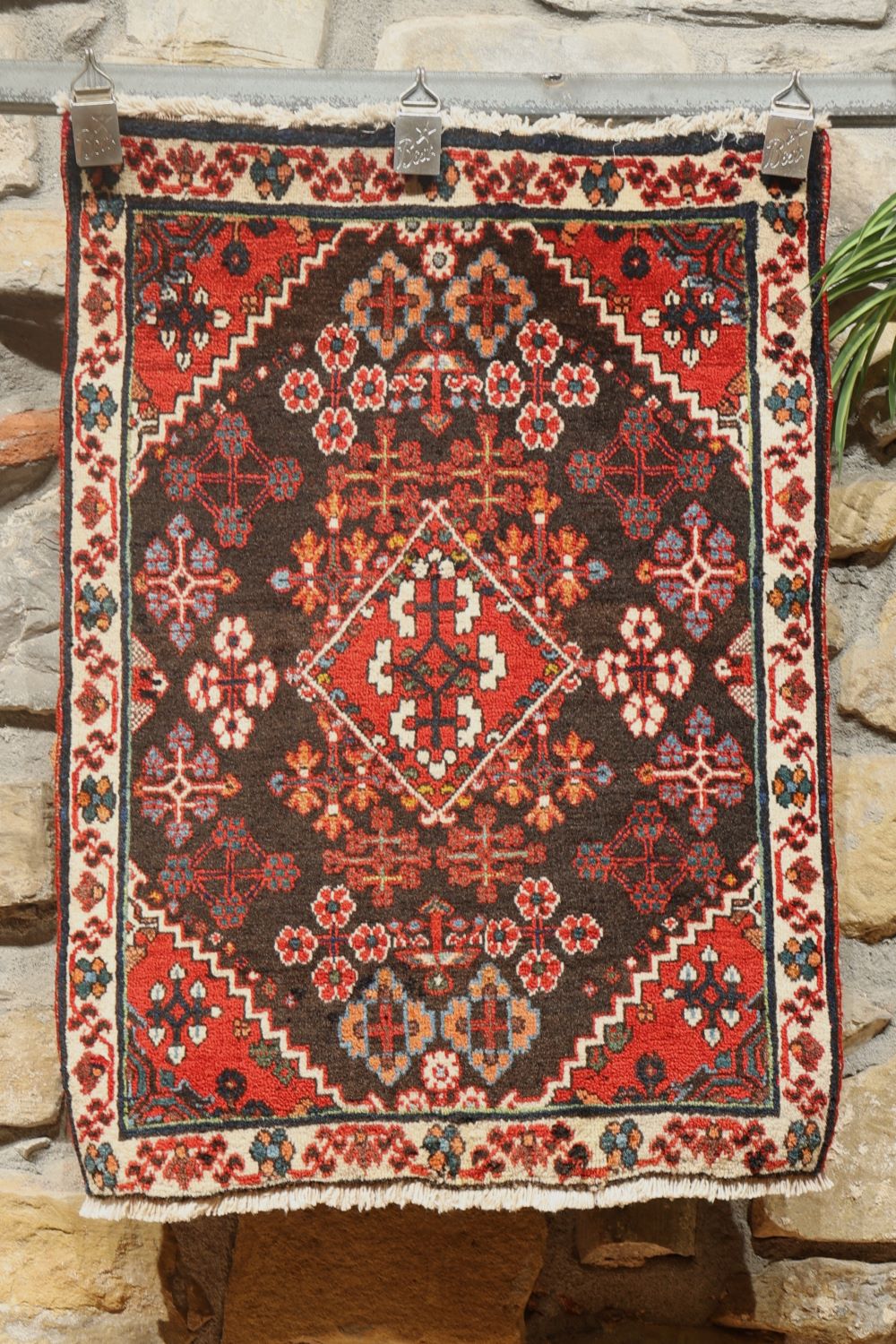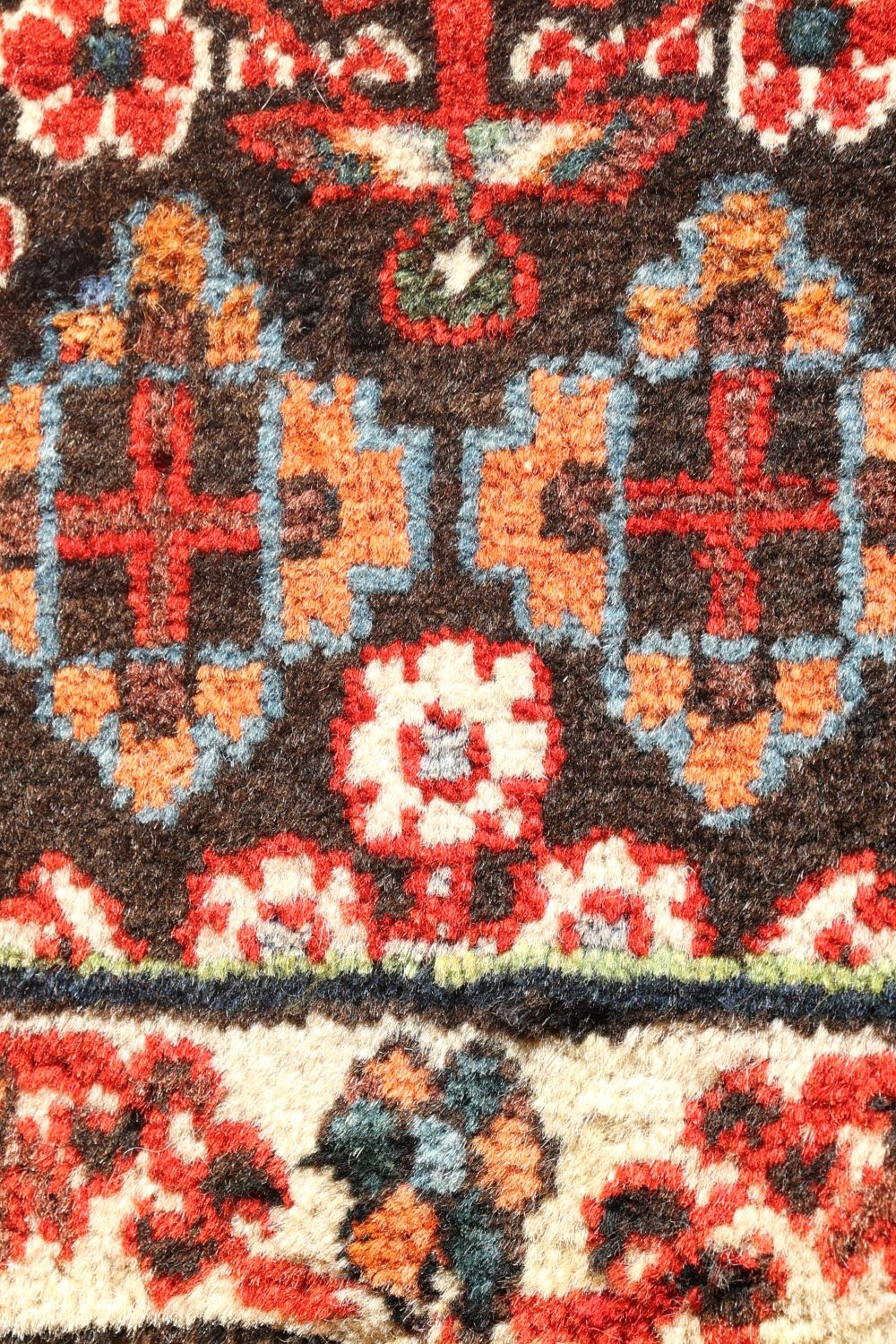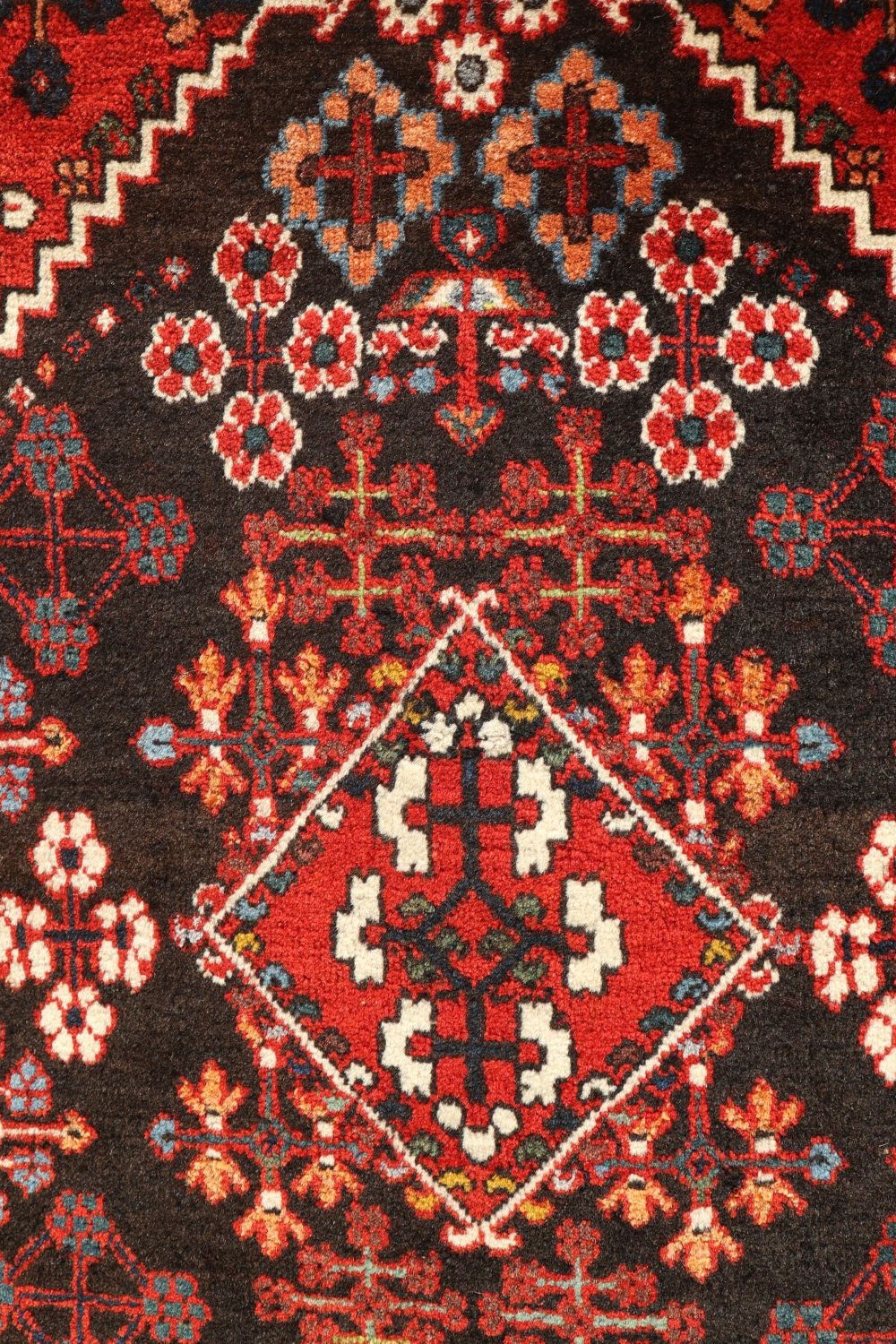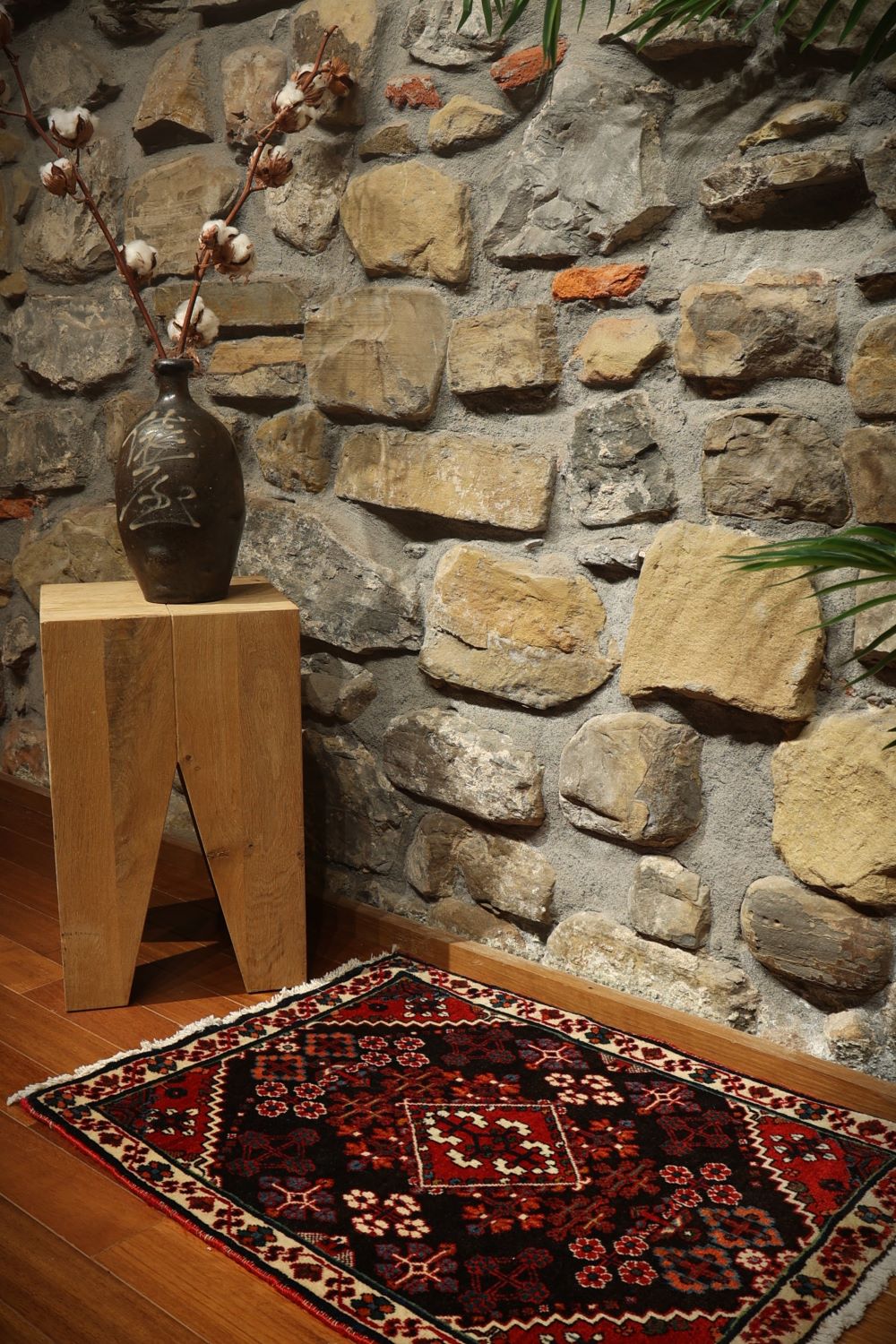175.00 €
Joshagan oriental rugs have been woven continuously for centuries by the people of the Persian village of Joshagan (also spelled Joshigan, Josheghan, Joshegan-e-Qali, Djaushegen).
It is believed that as early as the 17th century, during the golden years of rug weaving of the Safavid era, Joshagan rugs were woven for export.
Joshagan is located in north central Iran, just north of the city of Isfahan. Its location on an early important trading road leading South from Kashan to Isfahan, made it a principal market center.
The design of Joshagan rugs has remained relatively unchanged for centuries and is fairly easy to identify. The most common pattern of the rug is a diamond-shaped central medallion on a deep red field filled with geometric shaped floral motifs that can resemble snowflakes or pebbles. Four-petal flowers are often found within the medallion.
The red background is usually accompanied by contrasting dark blue borders and corners, like in this case. This Joshagan rug is finelly woven.
Material: 100% hand-spun sheep wool
Size: 72×54 cms
Origin: Josheghan, Iran
Date of weaving: 1970’s
The term Pushti or Poshti meaning pillow or cushion has its roots in early Persian culture. Pushti or Poshti is a term that refers to small hand-knotted carpets traditionally used as back rests. The covers used to be filled with wool or straw and put on camel saddles for back support. A secondary use was as a cushion. Over time the use as a cushion superseded the original use. These are the small ‘rugs’ that would be taken out and unrolled for a cherished guest to sit on, bringing more luxury and circumstance to the occasion. It is a term used both for urban as well as cottage industry and nomadic examples. The tradition goes back at least to the Safavid period where in certain Persian miniatures the Shah can be seen portrayed sitting on a small square mat, usually on top of another carpet or on a raised dais. A large part of the attraction to the Poshti rugs and part of the reason this may be an unknown genre, is that these rugs were of incredible beauty and craftmanship and therefore, families were reluctant to sell them.
They are similar to the Balisht of the Baluch, the yastiks of Turkey or the Napramach of the Uzbeks.
1 in stock
Additional information
| Weight | 2 kg |
|---|
Subscribe and receive the lastest news
